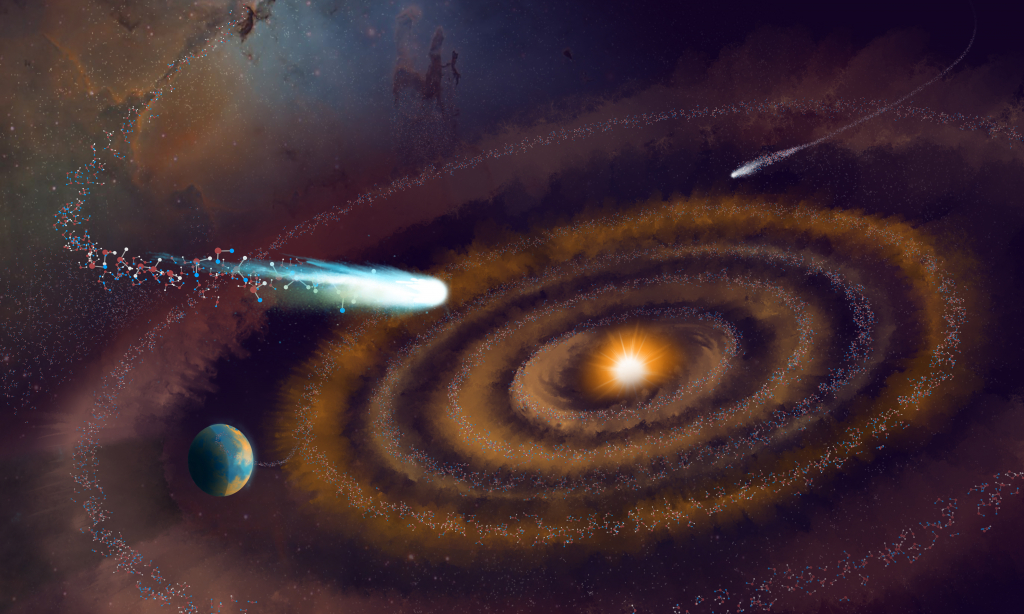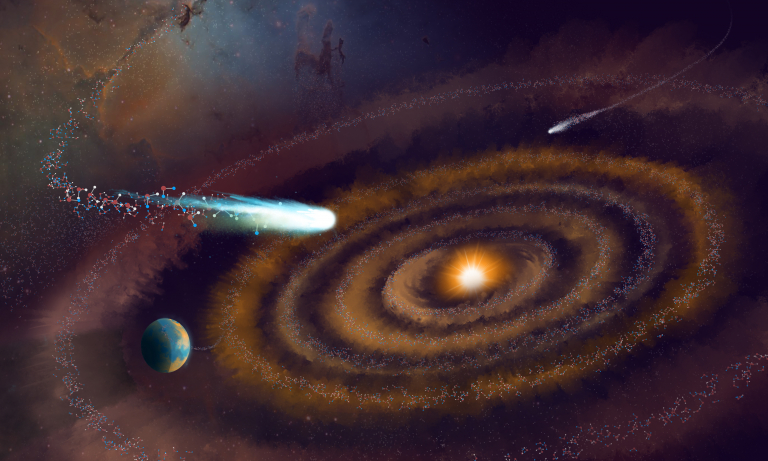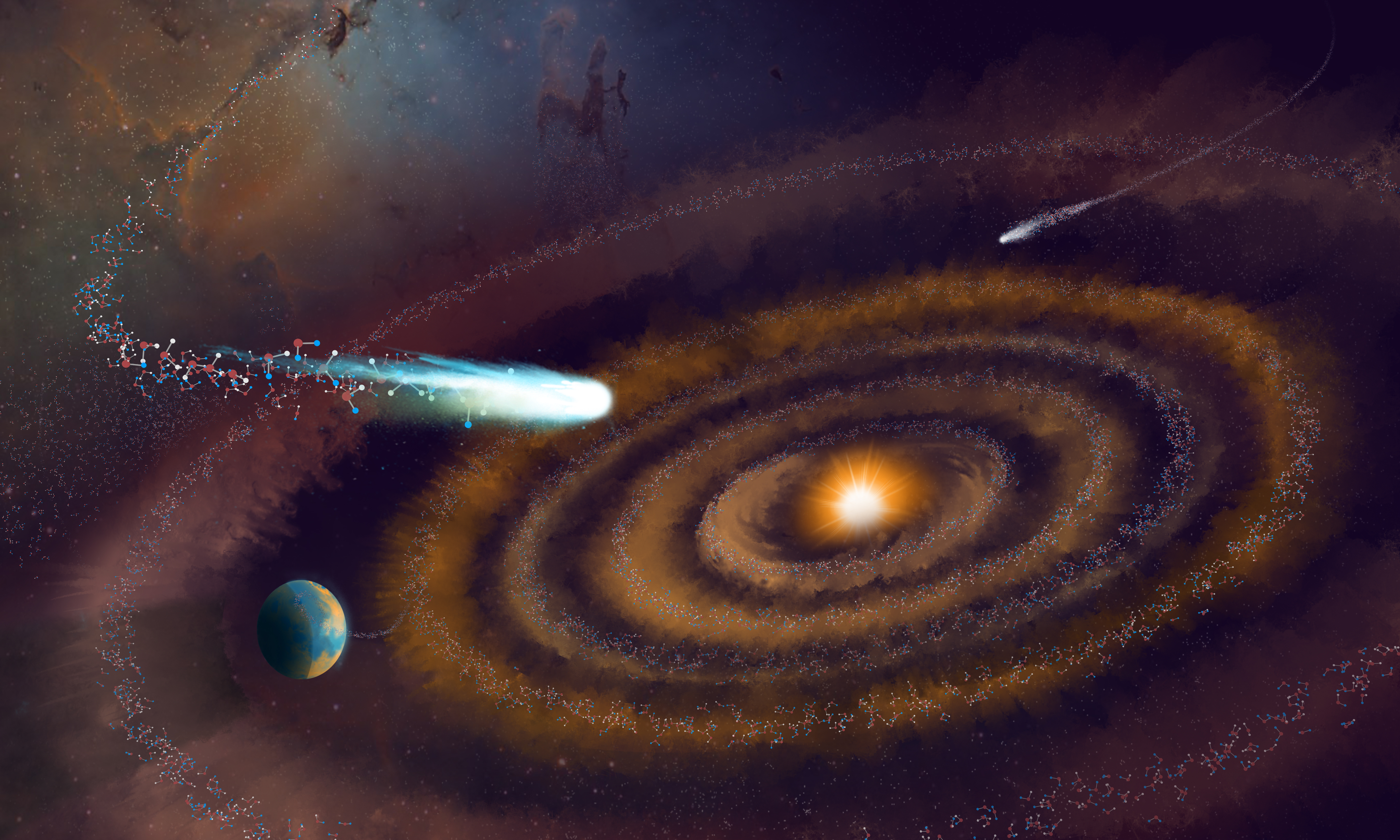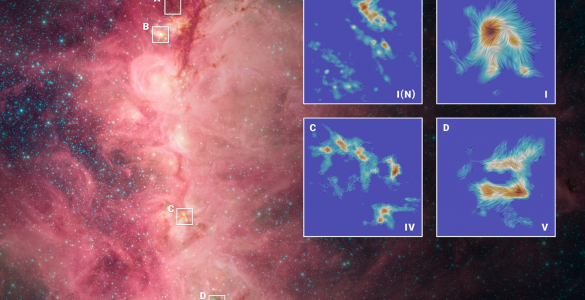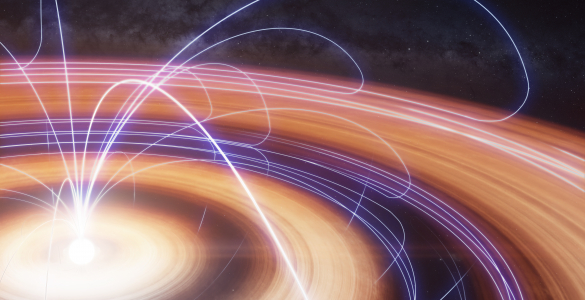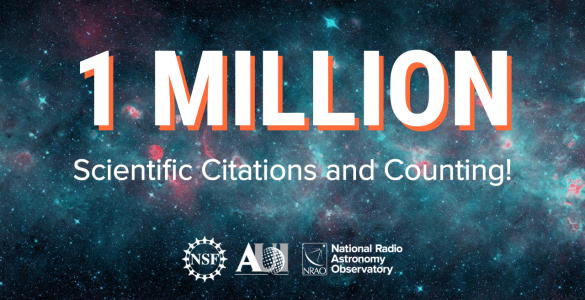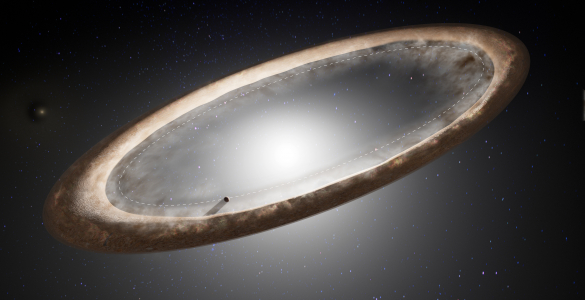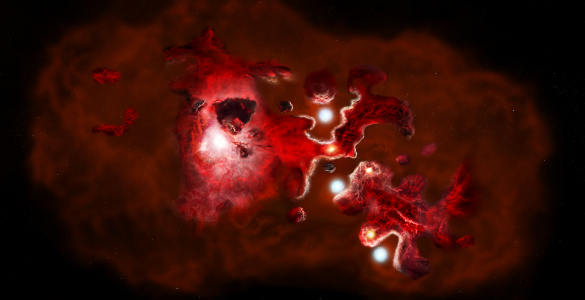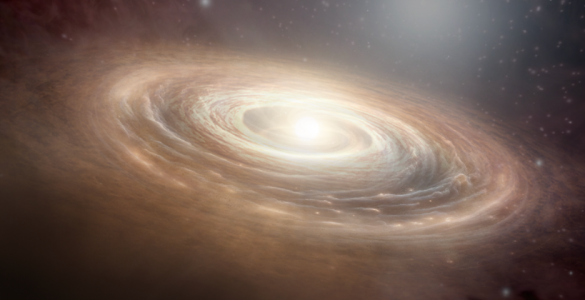The discovery of ancient water in a planet-forming disk reveals that some of the water found in comets—and maybe even Earth—is older than the disk’s star itself, offering breakthrough insights into the history of water in our Solar System.
Astronomers using the Atacama Large Millimeter/submillimeter Array (ALMA) have made a first-ever detection of doubly deuterated water (D₂O, or “heavy water”) in a planet-forming disk around V883 Ori, a young star. This means that the water in this disk, and by extension the water in comets that form here, predates the birth of the star itself, having journeyed through space from ancient molecular clouds long before this solar system formed.
“Our detection indisputably demonstrates that the water seen in this planet-forming disk must be older than the central star and formed at the earliest stages of star and planet formation,” shares Margot Leemker, lead author on this paper, and a postdoc with the Department of Physics, University of Milan. “This presents a major breakthrough in understanding the journey of water through planet formation, and how this water made its way to our Solar System, and possibly Earth, through similar processes.”
Does this mean that the water in your morning cup of coffee could be older than the Sun? The chemical fingerprinting of D₂O shows that these water molecules have survived the violent processes of star and planet formation, travelling billions of kilometers through space and time before, ending up in planetary systems like our own. Instead of being destroyed and reformed in the disk, the bulk of this water is inherited from the earliest, coldest stages of star formation, a cosmic hand-me-down that may also be present on Earth today.
“Until now, we weren’t sure if most of the water in comets and planets formed fresh in young disks like V883 Ori, or if it’s ‘pristine,’ originating from ancient interstellar clouds,” shares John Tobin, a scientist with the U.S. National Science Foundation National Radio Astronomy Observatory, and second author on this new paper. The detection of heavy water, using sensitive isotopologue ratios (D₂O/H₂O), proves the water’s ancient heritage and provides a missing link between clouds, disks, comets, and ultimately planets. This finding is the first direct evidence of water’s interstellar journey from clouds to the materials that form planetary systems—unchanged and intact.
Water is fundamental to life and habitability. Knowing where planetary water comes from helps us understand the ingredients for life in our Solar System and in others. This discovery suggests that many young planets, and maybe even worlds beyond our own, could inherit water billions of years older than themselves, reminding us how deeply interconnected our existence is with the universe’s ancient past.
About NRAO
The National Radio Astronomy Observatory (NRAO) is a facility of the U.S. National Science Foundation, operated under cooperative agreement by Associated Universities, Inc.
About ALMA
The Atacama Large Millimeter/submillimeter Array (ALMA), an international astronomy facility, is a partnership of the European Southern Observatory (ESO), the U.S. National Science Foundation (NSF) and the National Institutes of Natural Sciences (NINS) of Japan in cooperation with the Republic of Chile. ALMA is funded by ESO on behalf of its Member States, by NSF in cooperation with the National Research Council of Canada (NRC) and the National Science and Technology Council (NSTC) in Taiwan and by NINS in cooperation with the Academia Sinica (AS) in Taiwan and the Korea Astronomy and Space Science Institute (KASI).
ALMA construction and operations are led by ESO on behalf of its Member States; by the National Radio Astronomy Observatory (NRAO), managed by Associated Universities, Inc. (AUI), on behalf of North America; and by the National Astronomical Observatory of Japan (NAOJ) on behalf of East Asia. The Joint ALMA Observatory (JAO) provides the unified leadership and management of the construction, commissioning and operation of ALMA.






